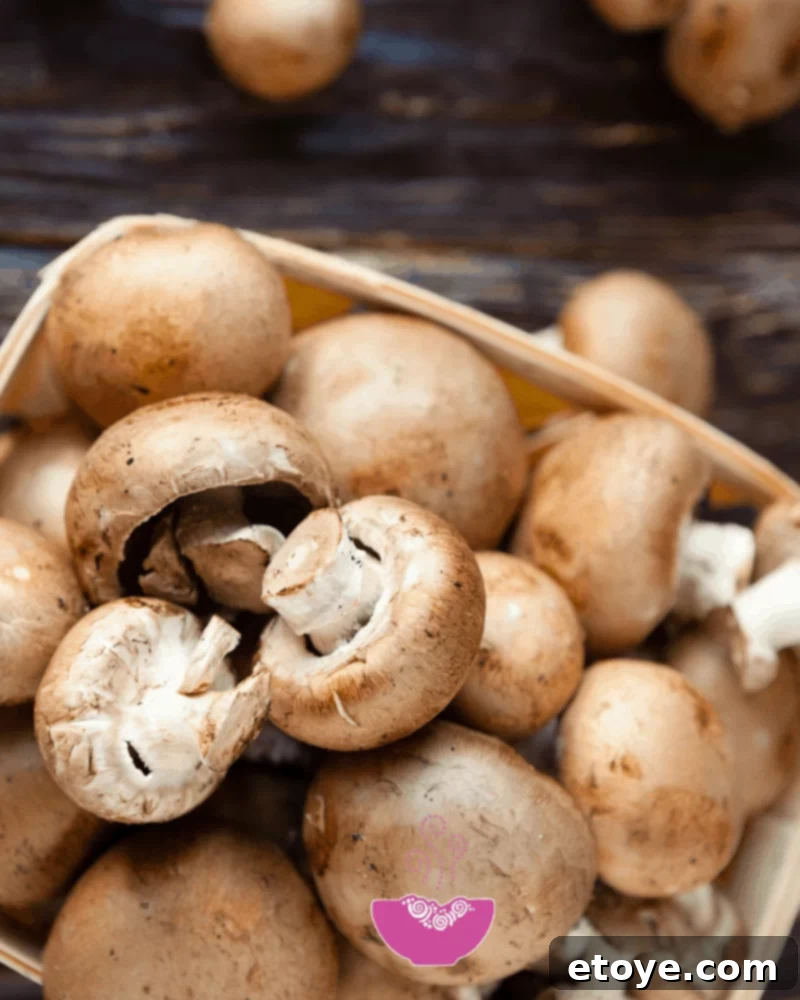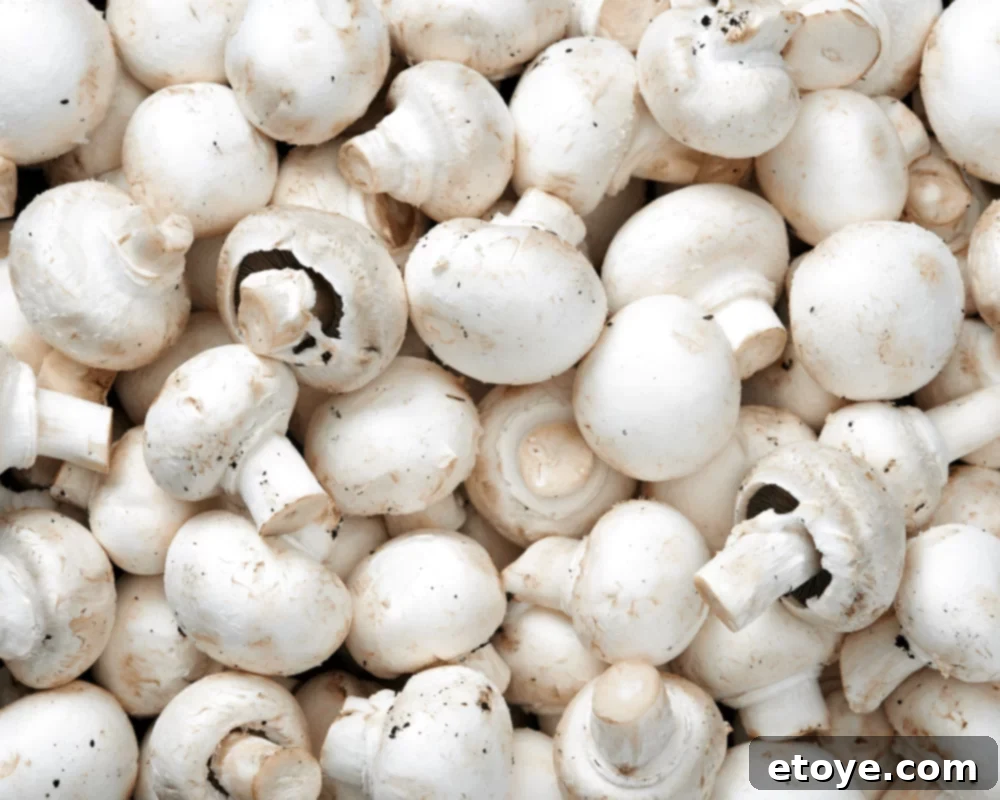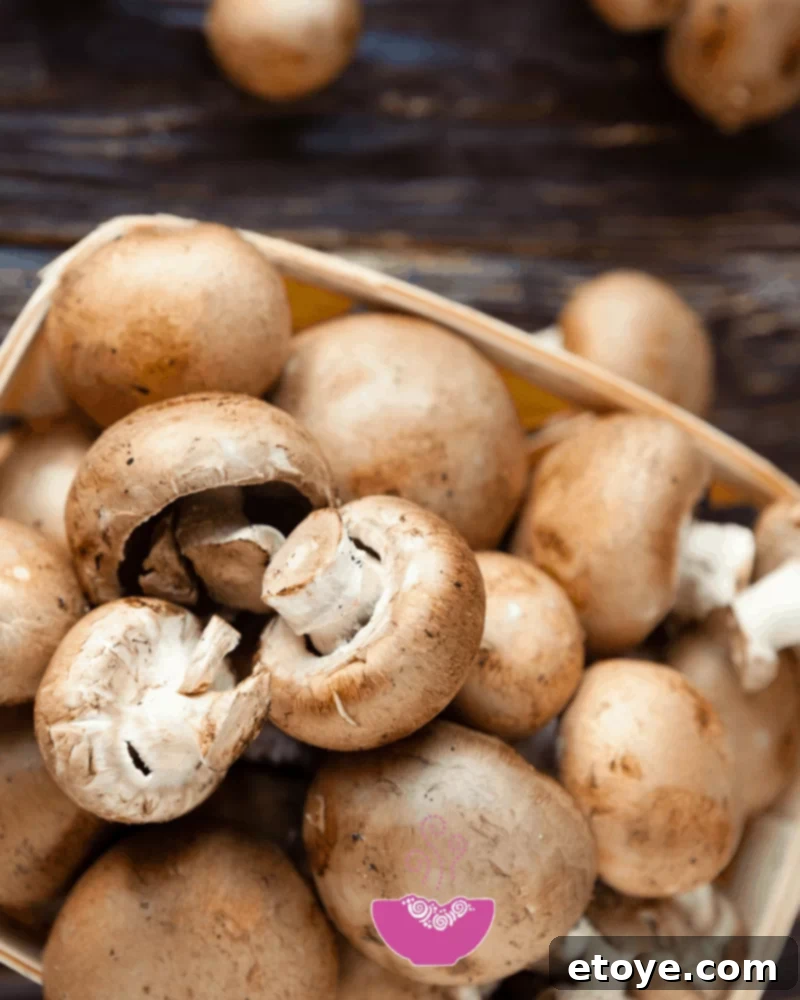Stepping into the produce aisle can sometimes feel like navigating a culinary labyrinth. Among the vibrant array of fruits and vegetables, some items, like mushrooms and asparagus, often leave shoppers feeling a bit uncertain. They all seem to look similar, and sometimes, a little less than pristine. However, mastering the art of selecting the freshest produce is a game-changer for any home cook, elevating your meals from good to extraordinary. This comprehensive guide will equip you with expert tips for confidently choosing the best mushrooms and asparagus at the grocery store, ensuring optimal flavor and longevity, and showing you how these fresh ingredients can transform your kitchen creations, especially vibrant Buddha Bowls.

Unlocking the Secrets of Fresh Mushrooms: Selection and Storage
Mushrooms are incredibly versatile, offering an earthy depth to countless dishes, from hearty stews to light salads. But their delicate nature means that proper selection and storage are crucial to enjoying their full potential. Knowing what to look for can significantly impact the taste, texture, and nutritional value of your meals, ensuring every dish is a culinary success.
How to Choose the Freshest Mushrooms at the Grocery Store
The key to selecting top-quality mushrooms lies in a few simple yet effective observations. Don’t let their rustic appearance fool you; subtle cues reveal their freshness. Begin by gently picking up a handful of mushrooms and examining them closely from all angles.
First and foremost, inspect the caps. They should appear firm, plump, and smooth, without any signs of sliminess, bruising, or dark, soft spots. A healthy mushroom cap will have a consistent, even color, whether it’s the bright white of button mushrooms, the light tan of creminis, or the rich brown of portobellos. Avoid any mushrooms that look shriveled, dried out, or discolored, as these are clear indicators of age and dehydration, which will negatively impact their texture and flavor when cooked.
Next, and perhaps the most telling sign of freshness, is the condition of the gills. Flip the mushroom over and carefully observe the underside of the cap. For most common varieties like button and cremini mushrooms, the gills should be tightly closed or only minimally exposed, often still covered by a thin veil. As a mushroom ages, this veil breaks, and the gills become more exposed and darken in color. The more open and darker the gills, the older the mushroom, indicating a loss of moisture and potential deterioration in texture and flavor. Therefore, prioritize mushrooms with gills that are mostly concealed or light in color.
The stems should also be firm and not appear brittle, woody, or excessively dry at the base. While some natural browning at the very bottom where they were cut is normal, the rest of the stem should look healthy and intact. A stem that feels soft or hollow is often a sign of declining quality. Finally, trust your nose. Fresh mushrooms have a pleasant, earthy, mild aroma, often described as a forest-like scent. Steer clear of any mushrooms that have an off-putting smell, such as a sour, ammonia-like, or overly pungent odor, as this suggests spoilage and fermentation.
Preparing Your Mushrooms for Culinary Delight
Once you bring your fresh mushrooms home, a common question arises: how do you clean them effectively? It’s a pervasive myth that mushrooms should be soaked in water; they are like sponges and will absorb liquid readily, leading to a soggy, undesirable texture when cooked. Instead, a gentle and quick approach is best to preserve their natural integrity.
Most mushrooms will have some dirt or substrate clinging to them from their growing environment – this is perfectly normal and a sign of their natural origin. To clean them, simply use a soft brush, a damp paper towel, or your clean fingers to gently rub off any visible dirt or debris. For particularly soiled mushrooms, a quick, light rinse under cool running water is acceptable, but it’s crucial to immediately pat them thoroughly dry with a paper towel afterward. Ensuring they are completely dry before cooking is essential for achieving that desirable golden-brown sear and preventing them from steaming instead of browning.
The Best Way to Store Mushrooms for Lasting Freshness
Proper storage is paramount to extending the shelf life of your carefully selected mushrooms and preserving their unique qualities. The goal is to keep them cool, allow them to breathe, and prevent them from drying out or becoming overly moist, which can lead to sliminess and spoilage.
- **Maintain Optimal Airflow:** The most effective method is to keep mushrooms in their original packaging, especially if it’s designed with small vents that allow them to breathe. If you’ve purchased them loose or wish to transfer them, place them in a clean paper bag. A paper bag is ideal because it allows for optimal airflow, preventing moisture buildup, while simultaneously absorbing any excess humidity, which is crucial for preventing them from becoming slimy. Ensure the top of the bag is slightly open or loosely folded, never sealed tightly in a plastic bag or airtight container, as this will trap moisture and accelerate spoilage.
- **Refrigerate Promptly and Properly:** Place the paper bag or vented packaging in the main compartment of your refrigerator. Avoid storing them in the crisper drawer if it tends to trap too much humidity, as this can encourage spoilage. Kept this way, most fresh mushrooms will retain their quality, flavor, and texture for up to one week, sometimes even a few days longer depending on the variety and initial freshness. It’s a good practice to regularly check on them and remove any individual pieces that show early signs of spoilage to prevent it from spreading to the rest.

Asparagus: A Springtime Delight and Nutritional Powerhouse
Often considered a herald of spring, asparagus is a truly remarkable vegetable that combines delicate flavor with impressive nutritional benefits. Its crisp texture, distinctive taste, and vibrant color make it a favorite among chefs and home cooks alike. Understanding how to expertly select and store this green (or purple, or white!) spear ensures you get the most out of every delicious bite and maintain its peak freshness.

Why Asparagus is a Culinary Gem
Beyond its appealing green hue and elegant form, asparagus brings a lot to the table, both literally and figuratively. It’s a vegetable that truly offers a compelling combination of taste, convenience, and health benefits.
- **Exquisite Flavor and Satisfying Texture:** Asparagus boasts a unique, slightly earthy, and subtly sweet flavor profile that is both delicate and distinct. When cooked perfectly, it has a tender-crisp bite that is incredibly satisfying, offering a pleasant snap. Its versatility allows it to shine whether it’s roasted until caramelized, grilled for a smoky char, steamed for gentle tenderness, or quickly sautéed, offering a delicious textural contrast to many main dishes.
- **Remarkably Quick and Easy to Prepare:** For those busy weeknights or when you need a fast, healthy side dish, asparagus is an absolute dream. It cooks in mere minutes, making it an ideal choice for a speedy meal. A quick sauté in a hot pan, a few minutes in a hot oven, or a blanch in boiling water followed by an ice bath are all it takes to transform these spears into a delightful and nutritious accompaniment. Its minimal prep time makes it a go-to for healthy convenience.
- **A Verdant Source of Vital Nutrients:** Asparagus is not just tasty and quick; it’s a nutritional powerhouse. It’s an excellent source of essential vitamins, including a significant amount of Vitamin K (crucial for bone health), Vitamin A (for vision and immune function), Vitamin C (an antioxidant), and Vitamin E. It is particularly rich in folate, which is vital for cell growth and DNA synthesis. Furthermore, it provides dietary fiber for digestive health, important minerals like iron, and potent antioxidants, all while being remarkably low in calories.
- **Reliable Freshness in the Fridge:** With proper storage techniques, asparagus maintains its freshness and vibrant qualities for up to a week, sometimes even a little longer. This makes it a convenient vegetable to keep on hand for various culinary endeavors, reducing the need for frequent grocery trips.
Selecting the Finest Asparagus Spears
Just like with mushrooms, a discerning eye is key when choosing asparagus to ensure you’re bringing home the freshest, most flavorful spears. Look for bunches that appear lively, robust, and full of vitality.
The stalks should be firm, straight, and brightly colored from tip to base. For green asparagus, this means a vivid, deep green. Avoid any stalks that appear limp, rubbery, withered, or have signs of yellowing or dullness, as these are clear indicators of age and reduced moisture content. The thickness of the stalk is largely a matter of personal preference – thinner spears are often more tender and cook faster, while thicker ones can be meatier and stand up better to grilling or roasting, but both should feel equally firm and snappy. If they bend too easily, they are likely past their prime.
Pay close attention to the tips, which are the most delicate and perishable part of the spear. They should be tight, compact, and closed, with no signs of flowering (opening up), sliminess, or mushiness. Open or mushy tips are a clear sign of old asparagus and will not offer the desired texture. Finally, examine the cut ends; they should appear fresh and not overly dry, woody, fibrous, or split. A fresh, slightly earthy, green scent is a good indicator of freshness, while an overly pungent or sour smell should be avoided.
Optimal Asparagus Storage for Prolonged Freshness
To maximize the life of your fresh asparagus and keep it crisp, flavorful, and vibrant for as long as possible, proper storage is essential. Treat it much like a bouquet of flowers – it thrives with hydration:
Once you get it home, trim about half an inch off the bottom ends of the asparagus spears. This opens up the ends, allowing them to absorb water more efficiently. Then, stand the asparagus upright in a jar or a wide glass containing about an inch of cool water, similar to how you would keep fresh flowers. Loosely cover the tops of the asparagus with a plastic bag or damp paper towel to maintain humidity and prevent them from drying out. Place this setup in the main compartment of your refrigerator. Stored this way, your asparagus can remain fresh and vibrant for up to a week, sometimes even a little longer, ensuring it’s ready whenever you are for your next culinary creation.
Buddha Bowls: A Canvas for Your Fresh Produce
The concept of a “Buddha Bowl” has gained immense popularity for a very good reason: it’s a beautifully balanced, visually appealing, and highly customizable meal served in a single bowl. Typically featuring a base of grains, a source of protein, an array of vibrant vegetables, and a delicious dressing, it’s an ideal way to celebrate fresh, wholesome ingredients and offers endless possibilities for culinary creativity, making healthy eating both easy and exciting.
This is precisely where your freshly chosen mushrooms and asparagus truly shine and can transform a simple meal into something extraordinary. Their distinct textures and robust flavors add significant depth, visual appeal, and nutritional value to any Buddha Bowl. Imagine perfectly roasted asparagus spears providing a delightful crunch and earthy sweetness, alongside savory sautéed mushrooms offering a meaty, umami-rich component. They integrate seamlessly with a base of quinoa, brown rice, farro, lentils, chickpeas, and a medley of other colorful vegetables, creating a meal that is as satisfying to the palate as it is to the eye.
Incorporating these premium, fresh ingredients into your Buddha Bowls not only enhances flavor and boosts nutrition but also contributes to smarter, more economical cooking. By choosing quality produce and storing it correctly, you significantly reduce food waste, ensuring that every ingredient you use contributes positively to your meal and your budget. Buddha Bowls are all about creativity, balance, and making the most of what you have, and with premium, perfectly selected mushrooms and asparagus, you’re off to an exceptional start for a healthier, more flavorful lifestyle.
Mastering the selection and storage of fresh produce like mushrooms and asparagus is a fundamental skill for any home cook aspiring to create delicious, healthy, and vibrant meals. By applying these simple yet highly effective tips, you’ll not only enhance the quality and longevity of your ingredients but also unlock new culinary possibilities, making every dish, from a simple side to an elaborate Buddha Bowl, a true delight. Confidently navigate the produce aisle and bring home the best nature has to offer!
If you found this comprehensive guide to mastering fresh produce helpful, or if you’ve already started incorporating these tips into your cooking, please consider sharing your experience! We’d love to hear from you. Rate this article and let us know your thoughts, any personal tips, or your favorite ways to use fresh mushrooms and asparagus in the comments section below. Happy cooking!
